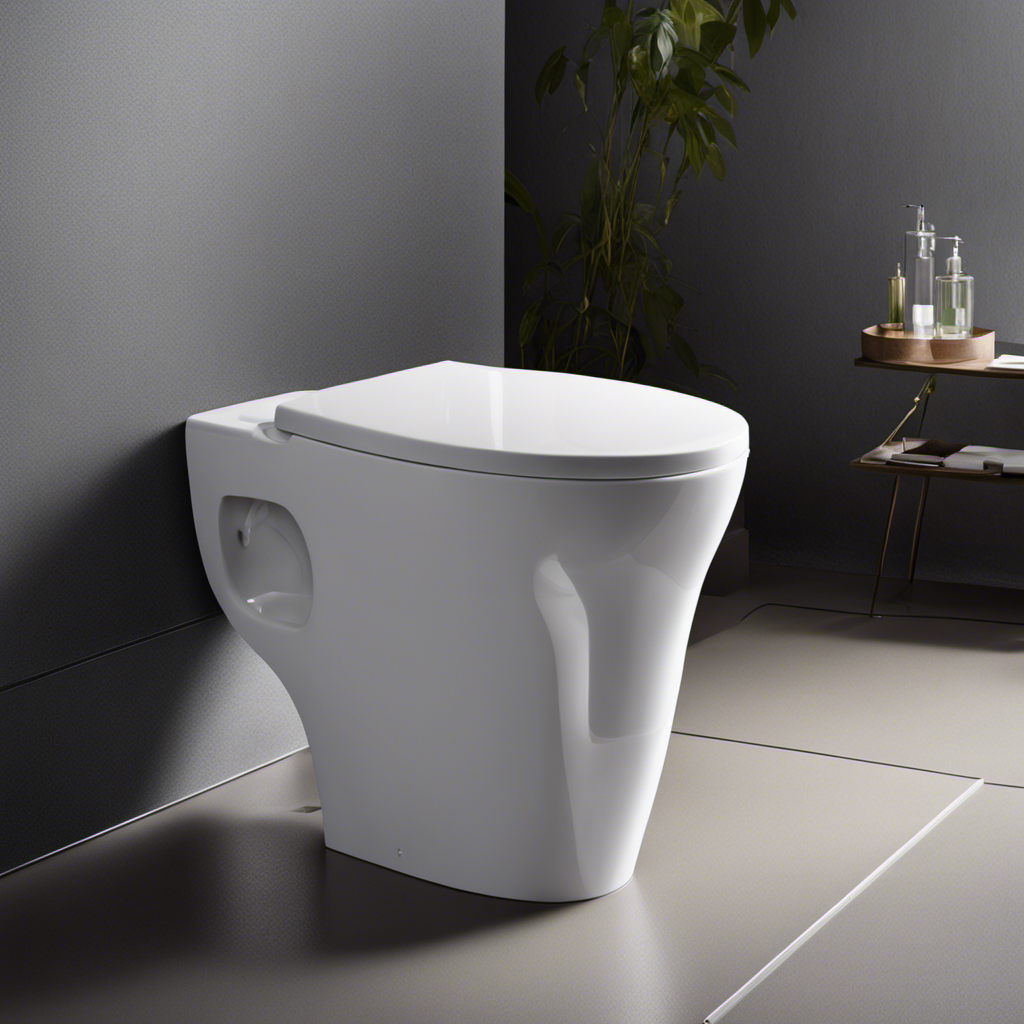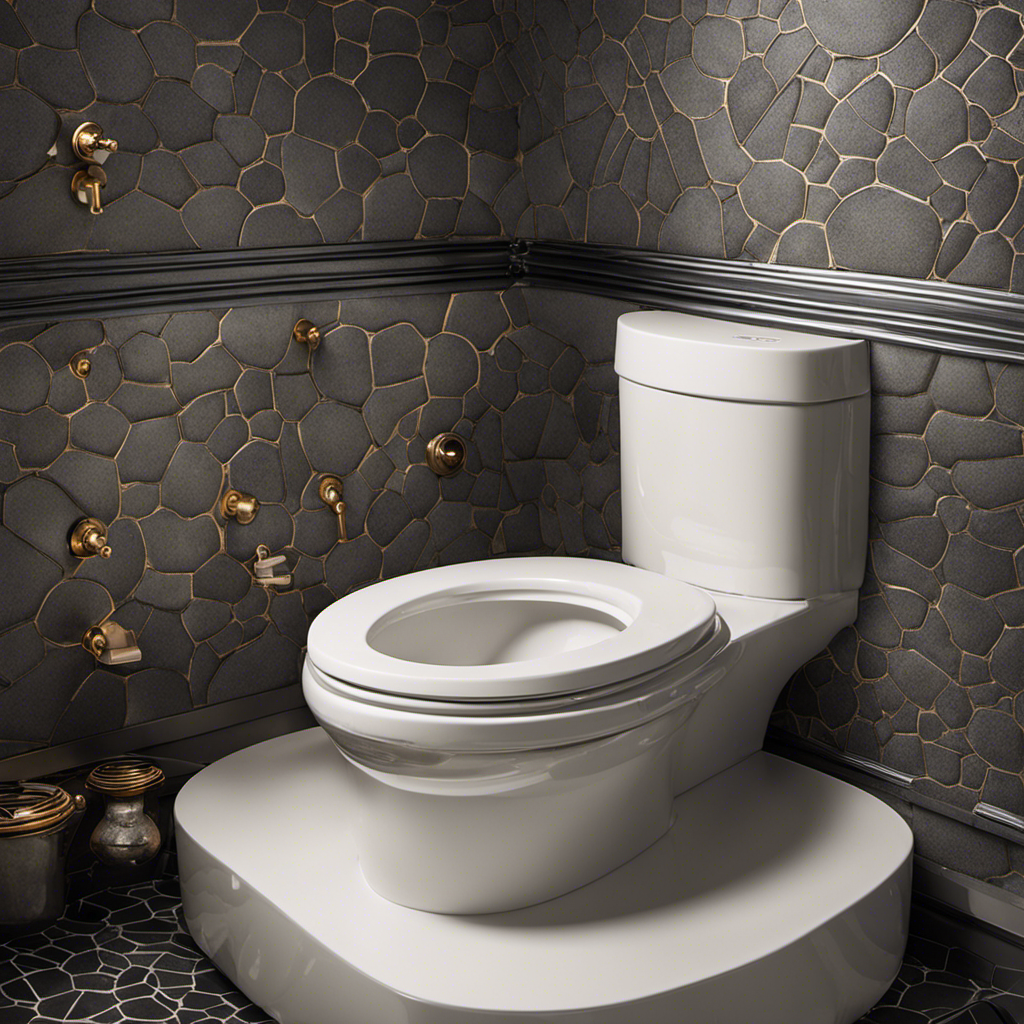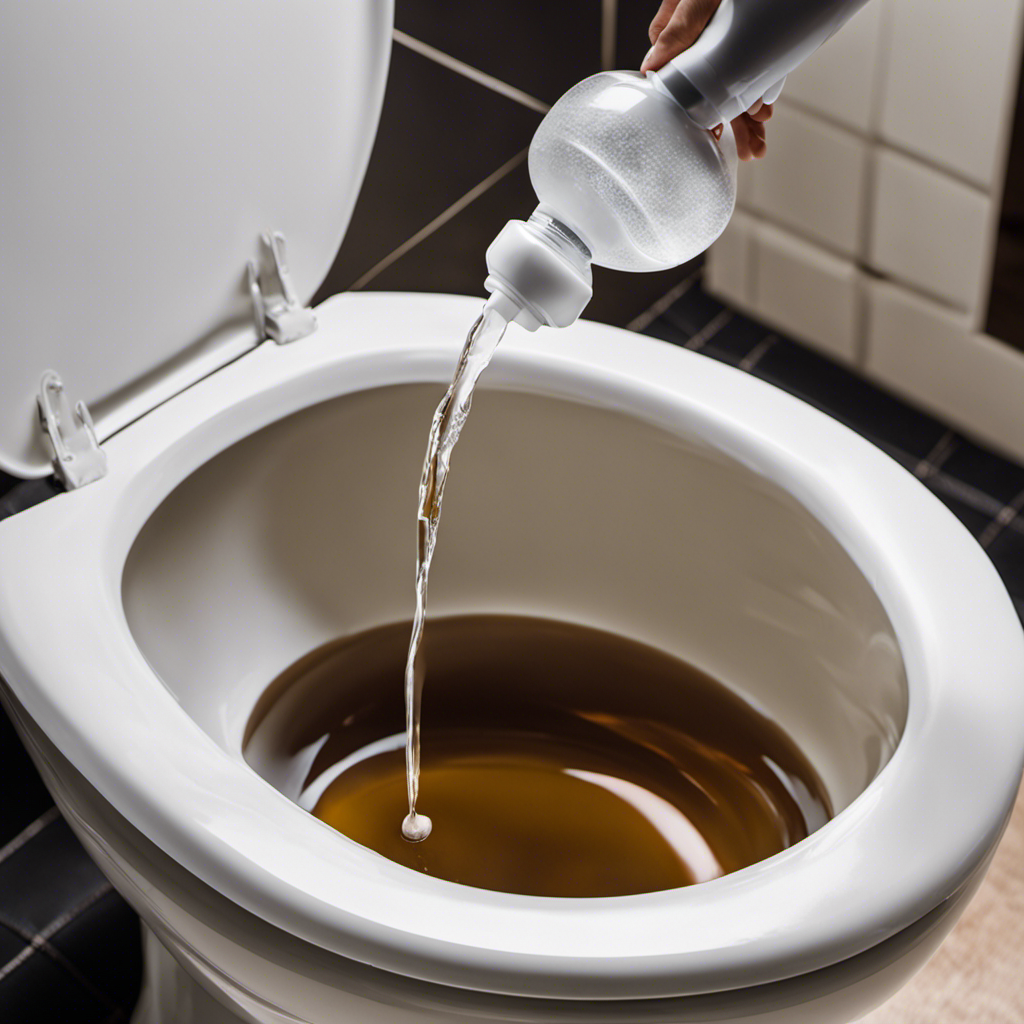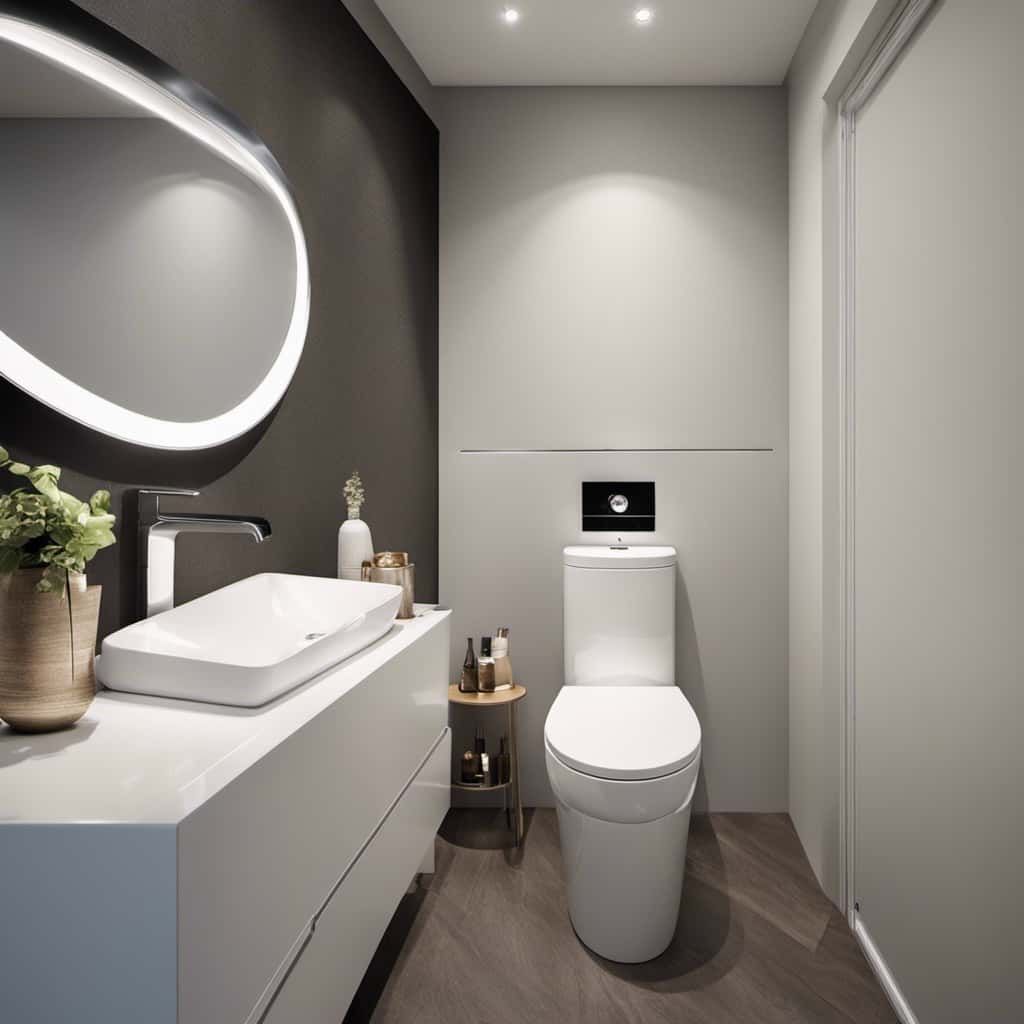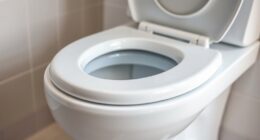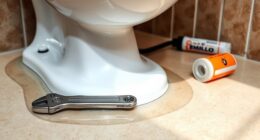Hey there! Did you know that about 80% of toilet bowl issues are caused by low water levels? If you’ve ever wondered why the water in your toilet bowl seems to be lower than usual, you’ve come to the right place.
In this article, I’ll delve into the possible causes, common issues, and effective solutions for low water levels in toilet bowls.
So, let’s get ready to dive in and fix that low water problem once and for all!
Key Takeaways
- Low water level in the toilet bowl can be caused by various factors such as a clogged trapway, debris or mineral deposits, and water flow restrictions.
- Common issues that contribute to low water in the toilet bowl include a clogged toilet trap, faulty fill valve, improper tank water level adjustment, and a cracked or damaged toilet bowl.
- To identify and fix low water levels, one should check the tank refill valve, look for signs of low water in the bowl, and adjust or replace the fill valve if necessary.
- Preventive measures include regularly cleaning the toilet bowl, checking for leaks, considering a dual-flush toilet, practicing water conservation, and inspecting the tank refill valve.
Possible Causes of Low Water Level in Toilet Bowl
One possible cause of the low water level in your toilet bowl could be a clogged trapway. The trapway is a curved passageway in the toilet’s plumbing system that helps to maintain the water level in the bowl.
When the trapway gets clogged with debris or mineral deposits, it can restrict the flow of water and cause the water level to be lower than normal. This can be especially problematic in areas facing water scarcity, as it can exacerbate the impact of water scarcity on toilet bowl water levels.
It is important to regularly clean and maintain the trapway to ensure the efficiency of the plumbing system and to prevent low water levels in the toilet bowl.
Common Issues That Lead to Low Water in Toilet Bowl
Check if the tank refill valve is fully open, as it could be causing the decreased water level in your toilet.
When troubleshooting low water levels in your toilet bowl, there are a few common issues to consider. These include:
-
Clogged toilet trap: A blockage in the trap can restrict water flow, resulting in a low water level.
-
Faulty fill valve: If the fill valve is not working properly, it may not be allowing enough water into the tank, leading to a low water level in the bowl.
-
Improper tank water level adjustment: If the water level in the tank is set too low, it will not adequately fill the bowl after flushing.
-
Cracked or damaged toilet bowl: A crack or damage in the bowl can cause water to leak out, resulting in a low water level.
Regular toilet bowl maintenance and addressing these issues promptly can help ensure proper water levels and prevent further problems.
How to Identify and Fix Low Water Level in Toilet Bowl
First, check the tank refill valve to ensure it’s fully open and not causing issues with the water level in the toilet bowl. Signs of low water in the bowl include a weak flush, difficulty flushing waste, and an exposed drain pipe.
If you notice any of these signs, there are steps you can take to increase the water level. Start by turning off the water supply valve behind the toilet. Then, remove the tank lid and adjust the float valve or fill valve to allow more water into the tank. If necessary, replace the fill valve altogether.
Once you’ve made the necessary adjustments, turn the water supply valve back on and check the water level in the toilet bowl.
Tips and Tricks to Prevent Low Water in Toilet Bowl
To prevent low water levels in the toilet bowl, it’s important to regularly inspect and adjust the tank refill valve. This valve controls the flow of water into the tank after each flush, ensuring that the bowl is properly filled.
Here are some tips and tricks to help you maintain an adequate water level in your toilet bowl:
- Clean the toilet bowl regularly to prevent clogs and blockages that can restrict water flow.
- Check for any leaks in the toilet tank or supply line that may be causing water loss.
- Consider installing a dual-flush toilet, which allows you to choose between a full flush or a reduced flush for liquid waste, saving water.
- Use water conservation tips such as turning off the faucet while brushing your teeth or using a bucket of water to flush instead of the toilet handle.
Professional Solutions for Low Water in Toilet Bowl
If you’re experiencing a decrease in water levels in your toilet, consider consulting a professional for expert solutions.
Professional maintenance can help identify the root cause of the low water in your toilet bowl and provide effective remedies.
One common reason for low water levels is a clogged or blocked toilet trapway. A professional can utilize specialized tools to remove the obstruction and restore proper water flow.
Additionally, they can inspect the toilet’s fill valve and flapper to ensure they are functioning correctly. They may also recommend water conservation techniques, such as installing a dual-flush system or adjusting the water level in the tank.
Frequently Asked Questions
Can Low Water Level in the Toilet Bowl Be a Sign of a Larger Plumbing Issue in the House?
Low water level in the toilet bowl can indicate a potential plumbing issue in the house. It may be a sign of toilet water leakage, which requires prompt attention and proper plumbing maintenance to prevent further damage.
What Should I Do if I Notice the Water Level in the Toilet Bowl Dropping Gradually Over Time?
If I notice the water level in the toilet bowl dropping gradually over time, I should start by checking for any blockages in the toilet trap or vent pipes. Regular toilet bowl maintenance and troubleshooting low water levels can help prevent larger plumbing issues.
Can a Clog in the Toilet Drain Cause the Water Level to Be Low?
Yes, a clog in the toilet drain can cause the water level to be low. It’s one of the common causes of low water level in the toilet bowl. Regular toilet bowl maintenance can help prevent this issue.
Are There Any Health Risks Associated With Low Water Level in the Toilet Bowl?
There can be health risks associated with low water level in the toilet bowl. It could indicate plumbing issues like a clog or a faulty fill valve, which can lead to unsanitary conditions.
How Can I Determine if the Low Water Level in the Toilet Bowl Is Due to a Problem With the Fill Valve or the Flush Valve?
To troubleshoot low water level in the toilet bowl, start by determining if it’s caused by a problem with the fill valve or flush valve. Check for issues like a faulty fill valve float or a clogged flush valve.
Conclusion
In conclusion, experiencing low water in your toilet bowl can be frustrating. By understanding the possible causes and common issues, you can easily identify and fix the problem.
Remember to keep an eye out for leaks, clogs, and faulty fill valves. Taking preventive measures such as regular maintenance and avoiding flushing inappropriate items can also help.
If all else fails, seeking professional assistance is a wise choice. Don’t let the water shortage dampen your spirits, tackle the issue head-on and restore the flow!
